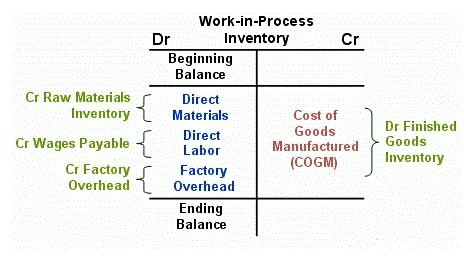Salary vs owner’s draw: How to pay yourself as a business owner 2021 Leave a comment
Content

Likewise, if Owner’s Draw vs Salary an owner of a sole proprietorship, you’re considered self-employed so you wouldn’t be paid a salary but instead take an owner’s draw. Single-member LLC owners are also considered sole proprietors for tax purposes, so they would take a draw. Complete Payroll Solutions helps thousands of start-up businesses throughout the Northeast with their payroll needs as an outsourced payroll provider. A common question we get from new small business owners is whether it’s better to put themselves on the payroll and be paid a salary or take what’s known as an owner’s draw.
Does owner’s drawings affect net income?
An owner's drawing is not a business expense, so it doesn't appear on the company's income statement, and thus it doesn't affect the company's net income. Sole proprietorships and partnerships don't pay taxes on their profits; any profit the business makes is reported as income on the owners' personal tax returns.
In most cases, you must be a sole proprietor, member of an LLC, or a partner in a partnership to take owner’s draws. Owner’s draws are usually taken from your owner’s equity account. Owner’s equity is made up of different funds, including money you’ve invested into your business. Best practices and better organization would dictate that proprietors and partners pay themselves some kind of regular salary in addition to their draws. By scheduling regular payments from the business account, there’s a clearer picture of what it costs to run the company. If you operate an S corporation or C corporation, there are three different processes for paying yourself as an owner.
Expenses
A sole proprietor or single-member LLC owner can draw money out of the business; this is called a draw. It is an accounting transaction, and it doesn’t show up on the owner’s tax return. C corps are taxed at a higher rate than individuals but have more benefits. Say Coffee Connoisseurs, a pass-through entity, earned $250,000 last year before paying its two equal partners. It doesn’t matter whether I drew my half of the profits or left all of it in the business. I’m still responsible for paying tax on my portion of earnings, $125,000 ($250,000 profits ÷ 50% ownership stake). The owner’s draw is accounted for differently than guaranteed payments.
- A shareholder distribution is a payment from the S corp’s earnings taxed at the shareholder level.
- You love your business, but that doesn’t mean you can afford to work for free.
- Liabilities refer to any debt owed by the business and money taken out of the business, such as an owner’s draw.
- Depending on your business, your draw amount might fluctuate from time to time.
- As a business owner, you’re providing some incredible value to your company, so allow yourself to take what you deserve.
Billsyou must pay every month, are liability accounts, as are any long-term debts owed by the business. There are some exceptions, but generally a business faces double taxation as a C Corp. As for how much to set aside for your future self, a good benchmark to aim for is between 10% and 15% of your gross income. Many or all of the products featured here are from our partners who compensate us. This influences which products we write about and where and how the product appears on a page. If you draw excessive amounts, the IRS may consider your business an unprofitable hobby and not allow for standard business deductions, which can cost you.
LLC with S-election (S corp)
For the purposes of the PPP program, owner’s draws are not included as payroll costs. Instead, your payroll costs include only the earnings you are taxed on. Since owner’s draws are not taxed, they are not considered payroll and not covered by the PPP loan program. When the Coronavirus pandemic hit, the government launched the Paycheck Protection Program to help small businesses pay their staff. If the program opens back up again, you should know how your owner’s draws or salary affects your PPP application.
What is the most tax efficient way to pay yourself?
The most tax-efficient way to pay yourself as a business owner is a combination of a salary and dividends. This will allow you to deduct the salary from your business's income and pay taxes on it. If you are not paying yourself a salary, you will have to pay taxes on the profit of your business.
This guide explains how https://www.bookstime.com/ owners can pay themselves with a payroll tactic known as an “owner’s draw.” Human Resources Hire, onboard, manage, and develop productive employees. Time and Attendance Track employee time and maximize payroll accuracy. 401 and Retirement Help employees save for retirement and reduce taxable income.
Alternatives to taking a draw
Non-profit, C corp, and S corp owners often choose to take a salary. While non-profit organizations have strict rules about salary approval and how much you can take, S corps and C corps do not. If you’re paying yourself using the salary method, you’re not affecting Owner’s Equity. If you’re on the draw method, stick to relatively equal payments at regular intervals. With the salary method, you’re regularly paid a set salary just like any other employee. With the draw method, you can draw money from your business earning earnings as you see fit.
- The next step is to set up a dedicated bank account for your nonprofit.
- These distributions are a deductible expense to the corporation, and you as the business owner will pay taxes on these earnings on your personal income tax return.
- Owner’s draws are usually taken from your owner’s equity account.
- You’re a business owner, and even if your business is your baby, you still need to pay yourself enough to keep your lights on at home and ensure you have food for the table.
